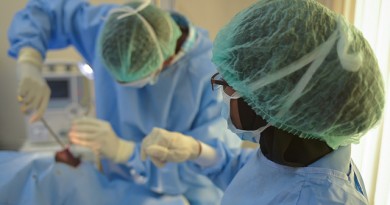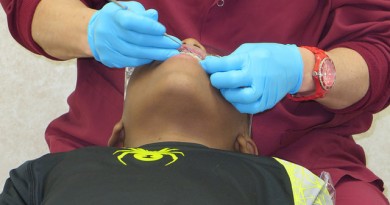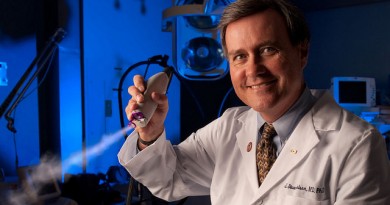How Much Does Cataract Surgery Cost?
Cataract surgery costs vary depending on what country the patient resides in, what clinic or hospital the surgery is done in and what insurance coverage the patient has. The cost of cataract surgery also varies depending on how severe the cataracts are, what type of cataract surgery is done and what type of artificial intraocular lens is chosen by the patient. In the United States, cataract surgery cost ranges from $3000-$5000 per eye.
What Is Cataract Surgery?
Cataract surgery is when the lens of the eye is removed due to a cataract forming on it that is seriously impairing the patient’s vision. During the surgery, the patient’s damaged eye lens is removed and replaced with an artificial lens.
Average Cost Of Cataract Surgery
The average cost of cataract surgery in the United States is around $3200 per eye. Those with insurance that covers 80% of the cataract surgery costs pay around $600 per eye to have the surgery done. However, this varies depending on the severity of the cataracts and what surgery the patient has done.
Prices also vary depending on what type of artificial intraocular lens is used; patients who choose a more high-tech lens like the presbyopia-correcting intraocular lens cause the average cost of cataract surgery to rise to around $4400 per eye. About 80% of the overall cataract surgery cost is for the surgeon, facility costs and anesthesiologist; the other 20% is for things like prescriptions, eye drops and the artificial intraocular lens. The cost breakdown on the average cost of cataract surgery is about $2400-$3000 for the surgeon, about $1500 for the use of the hospital or clinic’s facilities, about $350- $400 for the anesthesiologist and about $1000 for the artificial lens, prescriptions and follow up doctor appointments.
Cost Of Cataract Surgery In USA
The average cost of cataract surgery varies greatly per country. The cost of the surgery tends to be higher in America than in Europe, Canada and many other countries. The cost of cataract surgery in the USA ranges from $3000-$5000 per eye. The cost of cataract surgery in Canada is free for all Canadians as it is covered under the Canadian Health Care System, but for non-Canadians prices range from $350-$2000 USD per eye. In Europe, the cost of the surgery is $2100-$3700 USD per eye. In China, cataract surgery cost ranges from $300-$550 USD per eye, while in India cataract eye surgery cost ranges from $170- $320 USD per eye. India, Mexico, Turkey, Jordan and South Korea all receive good reviews from the World Health Organization for offering high quality cataract surgeries at very affordable prices. Many of these countries are focusing on medical tourism to help bring in people from all over the world. Due to the high cost of cataract surgery in their own country, many Americans and Europeans are going elsewhere to get the procedure done. Due to its close proximity to Mexico, many American citizens are going there to help save on cataract surgery costs; the cost of the same surgery in Mexico is 30-50% cheaper than in the United States.
Medicare And Cataract Surgery
Cataract surgery Medicare coverage is available on the Medicare part B plan. However, the surgery must be pre-approved by Medicare and the cost of it must fall in Medicare’s predetermined cataract surgery cost limit. Once Medicare approves the surgery, the patient will be required to pay 20% of the cataract surgery costs. If the surgery costs more than Medicare’s predetermined costs, the patient will be responsible for the cost difference. Some surgeons will work with the patient and adjust their costs so it fits within the approved cataract surgery Medicare coverage limit. Cataract surgery Medicare coverage only covers the cost of a standard intraocular lens; those wanting a premium lens will have to pay the cost difference between the standard and premium lenses. In most cases, patients with Medicare coverage only have to pay 20% of the cataract procedure cost; the average cost of cataract surgery with Medicare is around $600 per eye. To help cover costs not covered by Medicare, patients can purchase a secondary insurance policy from a different company. Cataract Free America offers assistance to senior citizens on Medicare that need help paying the 20% cataract surgery costs.
Cataract surgery Medicare coverage with Medicare’s plan B also covers 80% of one pair of eyeglasses or contact lenses following the surgery. However, the cost of the eyeglasses or contact lenses must fall in Medicare’s predetermined cost range and must come from a store that accepts Medicare. Cataract surgery Medicare coverage only covers the cost of standard frames and does not cover the cost of tinted or scratch resistant lenses, patients wanting premium frames or specialty lenses in their eyeglasses will have to pay the cost difference out of their own pocket. To receive Medicare coverage on eyeglasses or contact lenses after cataract surgery, patients will need to submit an eyeglass prescription that has been signed and dated by their doctor.
Types Of Cataract Surgery
There are two different types of cataract surgery techniques that are commonly used. The two major cataract surgery options are Phacoemulsification or Extracapsular cataract extraction.
Phacoemulsification is also called ultrasonic cataract removal. This is the most commonly used cataract surgery that is done. It uses sound vibrations to break up the cataract so it can be safely removed. Once the cataract is removed, an artificial lens is implanted. The procedure is very quick, only taking 20-30 minutes to perform. The cost of phacoemulsification tends to be slightly more expensive than the other common cataract surgery options, usually costing about $200 more per eye. However, as phacoemulsification requires much smaller incisions than the ECCE procedure, patients do not require stitches and heal faster, hence requiring less follow up appointments.
The other commonly used cataract surgery option is extracapsular cataract extraction. Extracapsular cataract extraction is called ECCE for short. In this surgery, the surgeon makes a small incision in the cornea and the lens is removed and replaced with an artificial lens. Usually, an ECCE is only done when the phacoemulsification cannot be done. Extracapsular cataract extraction is a cheaper cataract surgery option than phacoemulsification; ECCE is usually about $200 cheaper per eye than phacoemulsification. However, as ECCE requires stitches and takes longer to heal, patients require more follow up appointments.
Of the two common cataract surgery options extracapsular cataract extraction tends to be slightly cheaper than phacoemulsification, but when the cost of follow up appointments are factored in, they end up being very similar in overall cost.
What To Expect After Cataract Surgery
Right after the surgery, patients should expect to feel disoriented and groggy from the anesthesia. They will not be able to drive, so they will need someone to take them home. The eyes may cause a fair amount of pain at first and a pain medication may be needed. The days following the surgery, patients can expect to have a slight sensitivity and/or grittiness in their eyes. They may also see a light residue halo or glare. By the end of the first week, most people are seeing normally and are not experiencing anymore eye sensitivity. By the end of the first month, the large majority of people are completely healed from the surgery and are back to enjoying their normal activities with their improved vision.
Cataract Surgery Side Effects
The side effects from this surgery are usually small and fade away within several days. Patients may experience blurred or hazy vision, itchy or gritty feeling eyes, a slight sensitivity or ache in the eye and/or bruising of the eyelid or eye.
When To Have Cataract Surgery
Surgery is usually done when the cataracts can no longer be corrected by the use of eyeglasses. Cataract surgery is usually recommended when the patient is experiencing impaired vision that affects their daily routine.
Cataract Surgery Procedure
Cataract surgery is done by an ophthamalmic surgeon. During the surgery, the surgeon will carefully remove the protein matter that forms both the lens of the eye and the cataract, and will replace it with an intraocular or artificial lens that has been measured to fit the eye. This surgery has a very high success rate and in some cases, it also improves other visions problems the patient may have. The cataract surgery procedure is usually done in one day under a local anesthesia.
Cataract Surgery Recovery
Recovery from cataract surgery varies per patient; however, most people are completely healed by the end of the first month following the surgery. To help speed recovery from the surgery, patients are given anti-inflammatory and antibiotic eye drops. Patients will often feel a grittiness or slight sensitivity in their eyes for several days after the surgery, and should not rub or touch their eyes. To help speed recovery from the surgery, patients are advised not to do anything strenuous for the first couple of days following the surgery so as not to add pressure to the healing eyes. A few patients will take longer to heal and their recovery from the surgery will take 3-4 months.
Cataract Surgery Complications
Cataract surgery has some risks and possible complications. The most common complication of the surgery is posterior capsule opacification, which is when the surgeon accidentally leaves behind a single lens cell. This complication may cause the patient’s vision to worsen; it can be fixed with laser surgery. Other complications include eye infections, tear in the capsule, bleeding inside the eye or the artificial lens may become loose. Cataract surgery risks may also include a worsening or disturbance of vision due to damage in the retina. Some complications will require a subsequent surgery to fix. Fortunately, cataract surgery risks are low and complications are rare.
Vision After Cataract Surgery
Right after cataract surgery the patient will have obscured vision. Driving after cataract surgery is not allowed, and patients must arrange for a ride home. Patients should not start driving after the surgery until they get their doctor’s okay; most patients are able to drive again a week or two after surgery. During the first 24 hours after the surgery, is it recommended that patients have a friend or relative stay with them as their vision will be impaired. By the end of the first week, most people are seeing relatively clearly and as the weeks progress, vision is constantly improved. Most people are completely enjoying their improved vision by the end of the first month after surgery. However, some people heal slower and take 3-4 months before their vision is completely clear.
- 737SHARES






